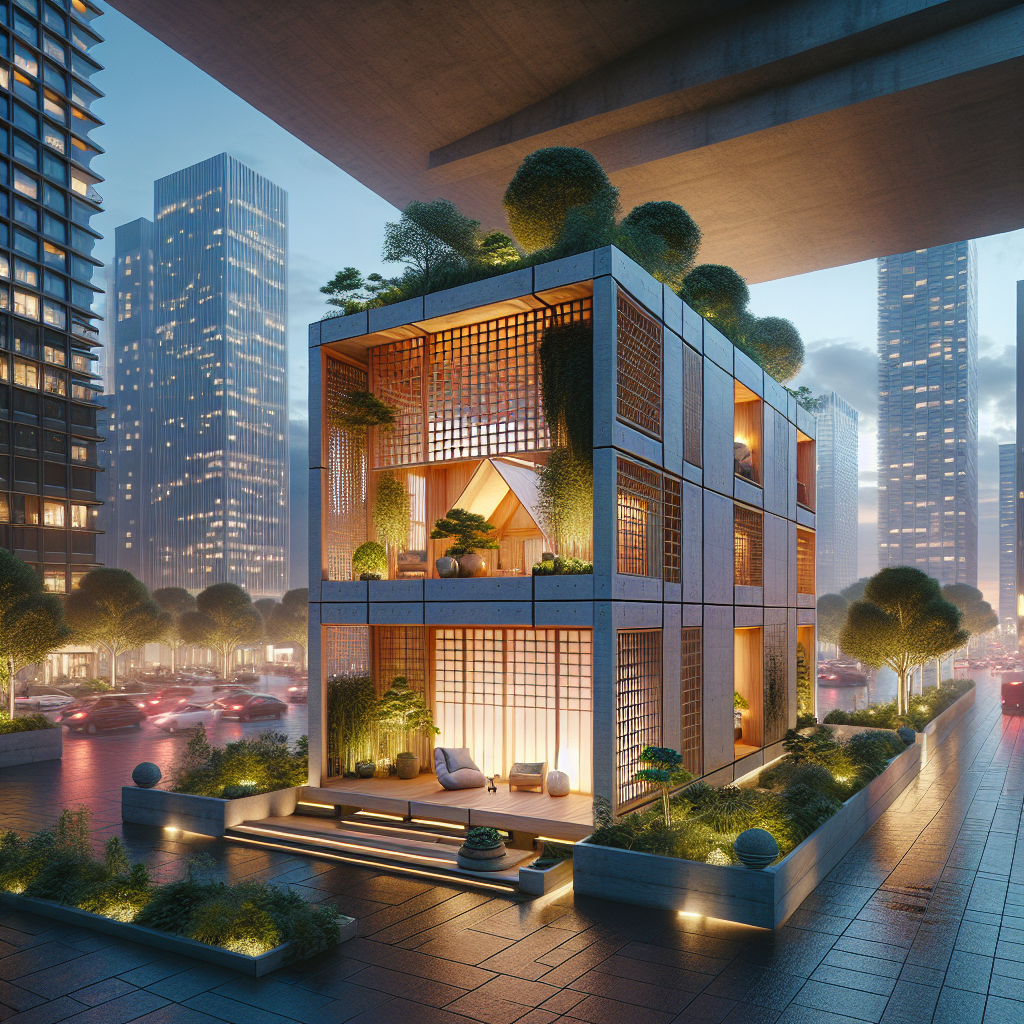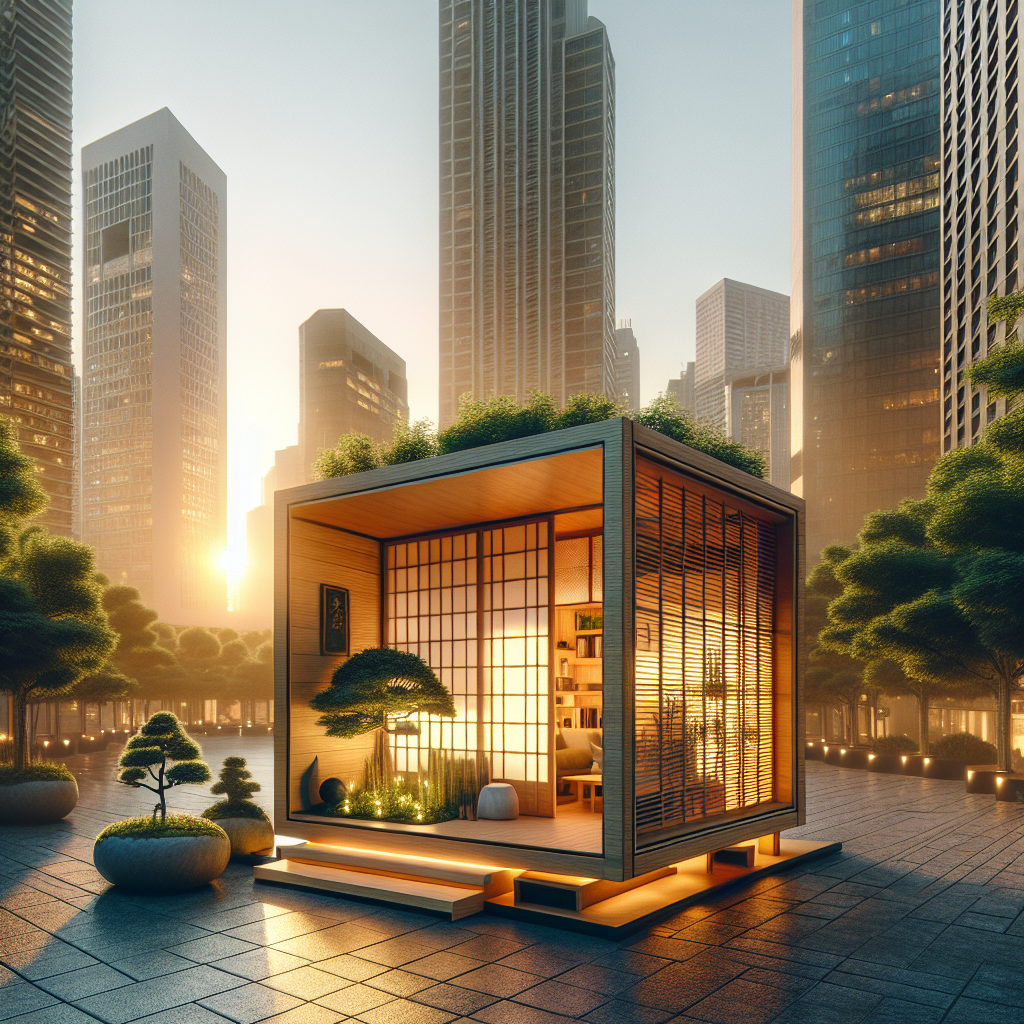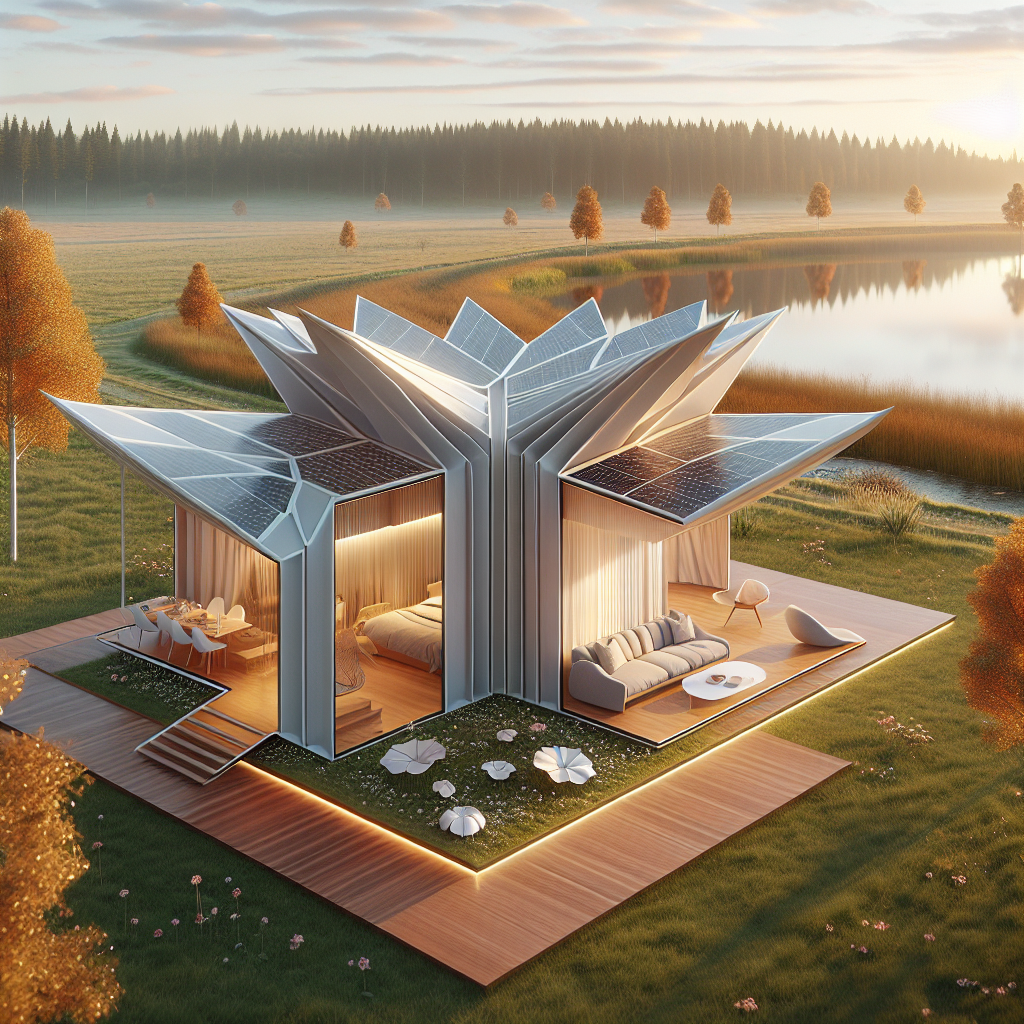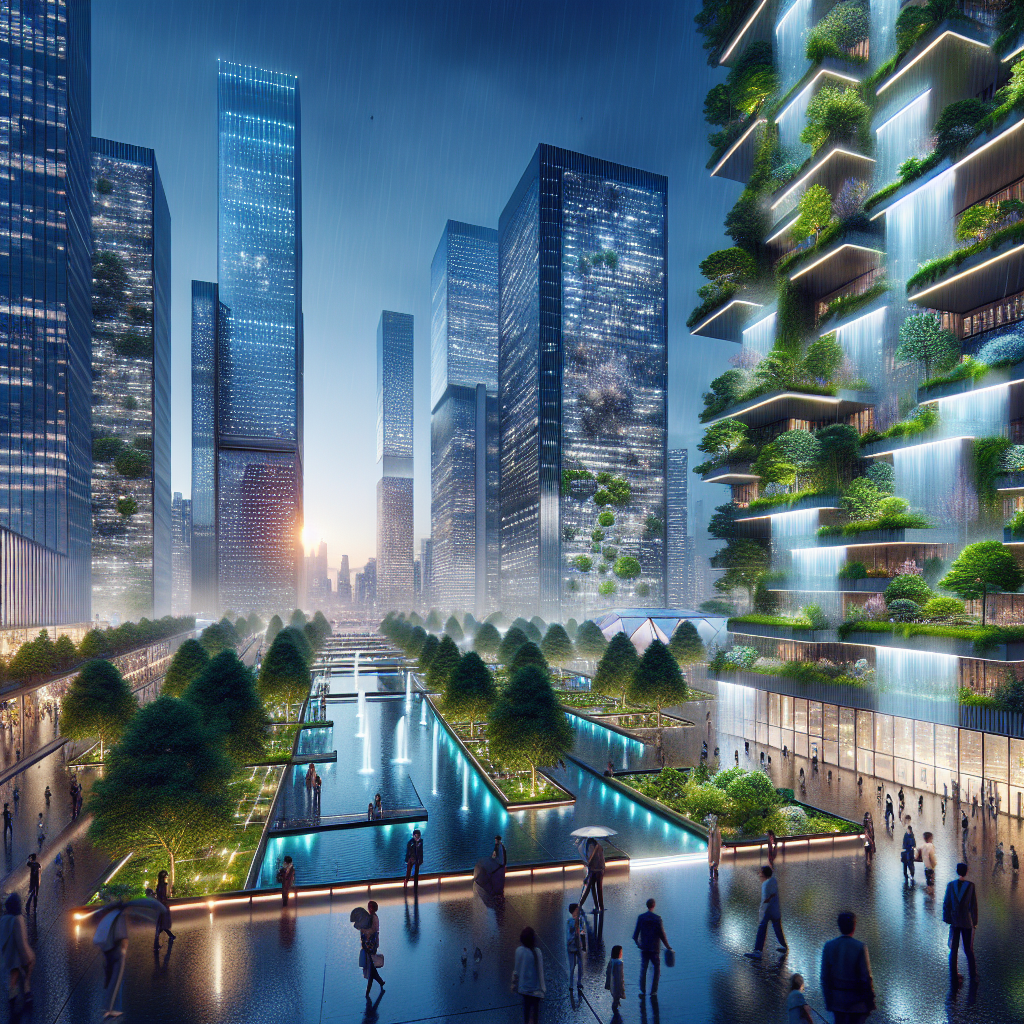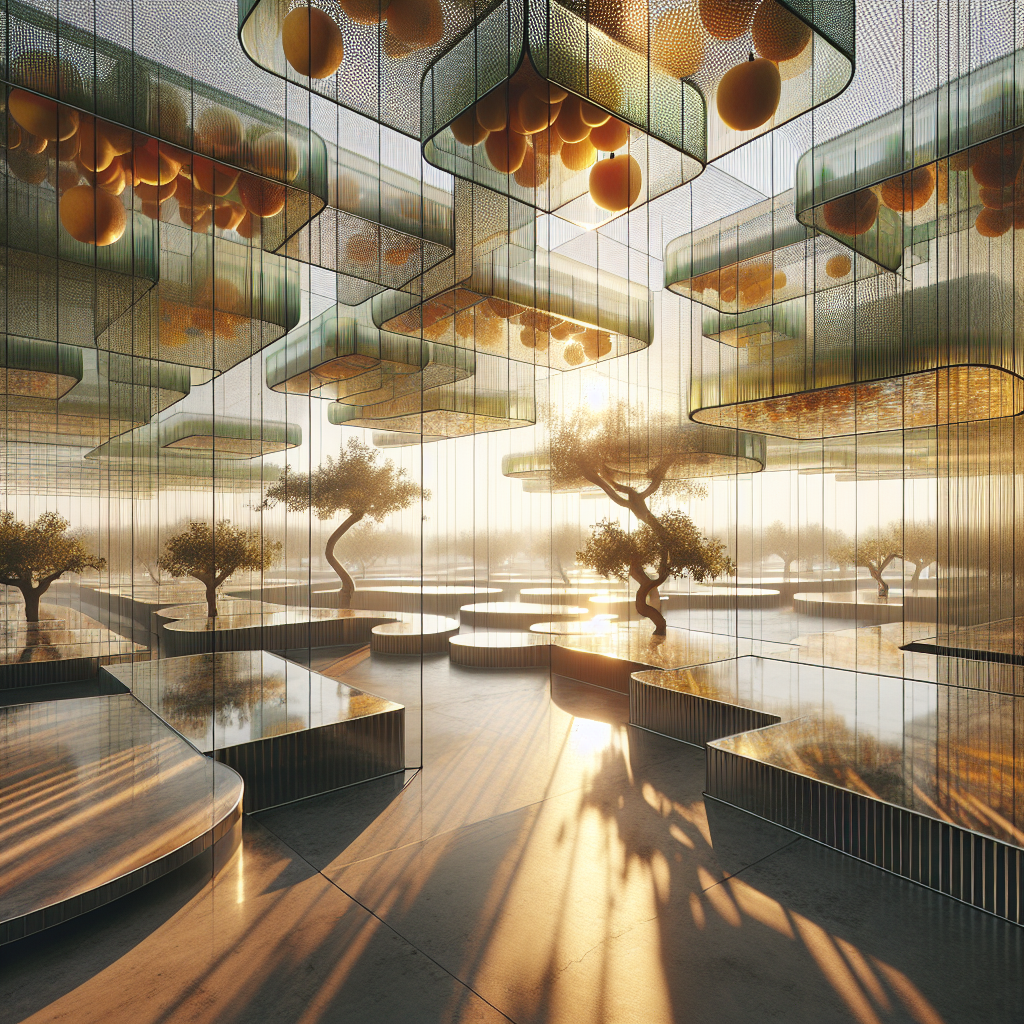Modular micro-temples compact: spaces for reflection in chaotic urban centers

Modular Micro-Temples Compact: Spaces for Reflection in Chaotic Urban Centers
In the relentless rhythm of modern urban life, finding moments of tranquility and introspection has become an increasingly elusive pursuit. As cities expand and populations swell, architects and designers are innovating to address the pressing need for intimate, contemplative spaces amidst urban chaos. Enter the concept of modular micro-temples compact, a pioneering architectural solution designed to offer city dwellers accessible sanctuaries for reflection, meditation, and respite. These diminutive yet thoughtfully designed structures embody a new paradigm in urban architecture, merging sustainability, modularity, and human-centric design to foster well-being in bustling metropolitan environments.
The Rise of Modular Micro-Temples: A Response to Urban Stress
Urbanization has transformed cities into vibrant hubs of innovation and culture, yet it has also amplified stress, anxiety, and sensory overload among inhabitants. Recent studies indicate that urban residents experience significantly higher stress levels compared to their rural counterparts, prompting architects to rethink the role of design in promoting mental health and emotional resilience. Modular micro-temples compact emerge as an elegant solution, offering small-scale, easily deployable structures that serve as personal retreats within the urban fabric.
Drawing inspiration from traditional temples and sacred spaces, these micro-temples distill architectural principles of serenity, symmetry, and spatial harmony into compact, modular forms. Their presence in urban centers symbolizes a conscious effort to reclaim mindfulness and tranquility in an increasingly frenetic world.
Architectural Elegance in Compact Form
Despite their modest dimensions, modular micro-temples compact exhibit remarkable architectural sophistication. Designers skillfully employ principles of minimalism, biophilic design, and modularity to create spaces that evoke calmness and introspection. For instance, many micro-temples incorporate natural materials such as sustainably sourced timber, bamboo, and stone, aligning with the growing trend of wooden skyscrapers and biophilic architecture. These materials not only enhance the aesthetic appeal but also foster a deeper connection with nature, proven to positively impact human health and well-being.
Interiors of these micro-temples are meticulously curated to facilitate meditation and reflection. Soft, diffused lighting filters through strategically placed apertures, casting gentle shadows and creating an atmosphere of tranquility. Acoustic insulation ensures a serene auditory environment, shielding occupants from the cacophony of urban noise. Moreover, the modular nature of these structures allows for flexibility in design, enabling customization to suit diverse cultural and spiritual preferences.
Case Study: Tokyo’s ZenPods Initiative
Tokyo, renowned for its dense urban landscape and relentless pace, has pioneered the integration of modular micro-temples compact through its innovative ZenPods initiative. Scattered strategically across bustling districts such as Shibuya and Shinjuku, these compact temples offer residents and workers brief yet profound moments of respite. Each ZenPod features minimalist interiors inspired by traditional Japanese aesthetics, incorporating tatami mats, natural wood finishes, and delicate shoji screens that diffuse natural light.
The success of Tokyo’s ZenPods underscores the potential of modular micro-temples to enhance urban livability. Users report significant reductions in stress and improved mental clarity after brief visits, highlighting the profound impact thoughtful architectural interventions can have on urban well-being.
Sustainability and Modularity: Designing for the Future
A defining characteristic of modular micro-temples compact is their inherent sustainability. Employing modular construction techniques, these structures are prefabricated off-site, significantly reducing construction waste and environmental impact. Furthermore, their compact size and modularity facilitate easy transportation, assembly, and adaptability to various urban contexts.
Innovative technologies, such as solar-powered design and rainwater harvesting systems, are seamlessly integrated into the architecture, ensuring minimal ecological footprint. Designers are increasingly exploring advanced materials, including biodegradable composites and recycled aggregates, aligning with the broader movement toward biodegradable architecture and circular economy principles.
Global Adoption and Cultural Adaptations
The concept of modular micro-temples compact has resonated globally, with cities from New York to Mumbai embracing these sanctuaries as vital components of urban infrastructure. In New York City, modular micro-temples have been integrated into public parks and corporate campuses, offering accessible meditation spaces for city dwellers. Meanwhile, Mumbai’s approach incorporates vibrant colors and intricate patterns inspired by local traditions, demonstrating the versatility and cultural adaptability of the concept.
Architects and designers worldwide are recognizing the potential of these compact temples to address urban stress, promote mental health, and foster community engagement. Their proliferation signifies a broader shift toward human-centric urban design, prioritizing emotional well-being alongside functional efficiency.
Future Prospects: Expanding the Scope of Urban Serenity
As urban populations continue to surge, the demand for innovative solutions to mitigate stress and enhance quality of life becomes increasingly urgent. Modular micro-temples compact represent a promising avenue for architects and urban planners to create meaningful, restorative spaces within densely populated environments. Future iterations may incorporate advanced technologies such as augmented reality (AR) and virtual reality (VR), offering immersive meditation experiences that transcend physical boundaries.
Moreover, the integration of artificial intelligence (AI) in architecture, as explored in recent discussions on AI in architecture, could further enhance the adaptability and responsiveness of these spaces, tailoring environments to individual preferences and needs. The potential for innovation in this domain is vast, promising exciting developments in the years ahead.
Conclusion: A New Architectural Paradigm
Modular micro-temples compact represent a transformative approach to urban architecture, addressing the pressing need for accessible, contemplative spaces in chaotic urban centers. By combining architectural elegance, sustainability, and modularity, these structures offer city dwellers essential sanctuaries for reflection and emotional rejuvenation. As cities evolve, embracing human-centric design principles becomes imperative, ensuring urban environments not only accommodate growth but also nurture the well-being of their inhabitants.
In the quest for urban serenity, modular micro-temples compact emerge as beacons of tranquility, illuminating a path toward a more mindful, sustainable, and compassionate urban future.

